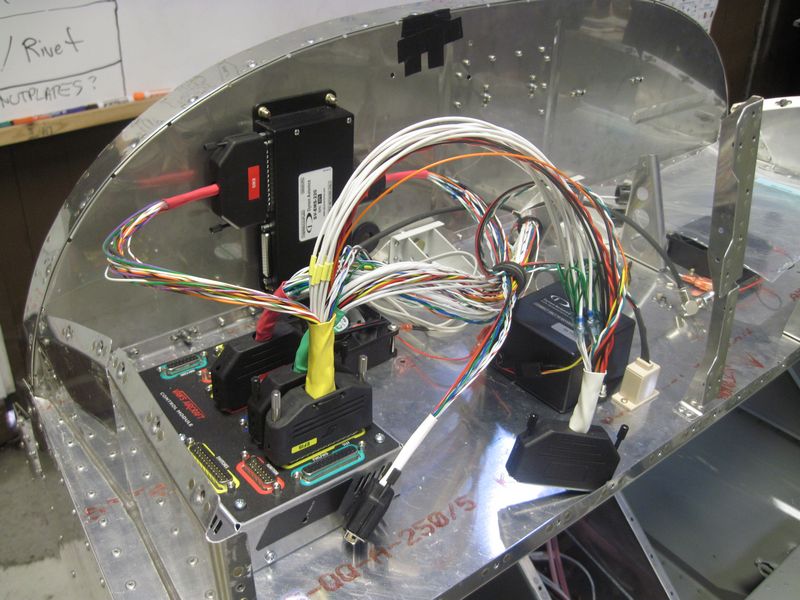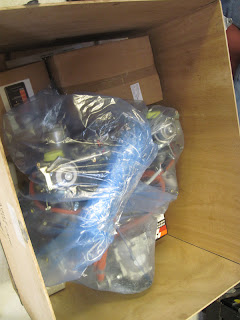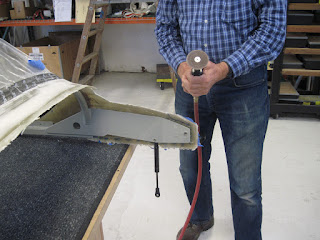After mostly finishing up the engine wiring, we moved on to the propeller. The ground-adjustable, two-blade, composite Sensenich propeller was fitted into its slot on the propeller hub. Two discs hold on the spinner, and after we attached the propeller, we tested the spinner clearance with the cowling. We had good clearance with the bottom cowl half, but the top cowl half was just rubbing the spinner. Later on, we made sure the spinner was on straight, and then we drilled the holes in the spinner attach discs.
We attached the stabilator to the tailcone (again) and hooked up the stabilator control cables.
Some of the students climbed into the fuselage and finalized the control system by using the plans to go step by step through the section to make sure all of the correct hardware was used in the correct order.
Merry Christmas from the TeenFlight Crew!





















































